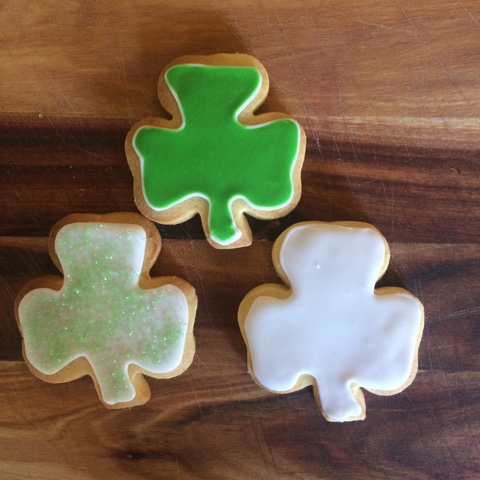These biscuits are made using this dough and cut out with a cloverleaf cookie cutter.
The best way to flood is to pipe a thin line of icing around the edge. Use Royal Icing , recipe below.
Use a cake decorating icing nozzle, plain / round size 2 . The piped line of icing acts as a wall to hold the flooded icing to come. Let it dry.
Pipe around the inside edge of the biscuit. Try to pipe in a smooth line, however,
If you make a mistake it easy to join a new line of icing in. Smooth the join with a lightly moistened, fine paintbrush.
Thin the icing with a little water or lemon juice and then drop or spoon put some into the area to be flooded. Use the paintbrush to spread it out.
Decorate with sprinkles or leave plain and allow to dry.
Icing can also be tinted. The piping icing can also be tinted the same colour as the icing that is used for the flooding.
You can also ice without the piping, although, you need to be careful as it will tend to run over the edges of the cookies.
The cookie on the left did not have the piping and the one one right did
You can change your mind and add another layer of icing.
Detail can be piped in and different coloured icings can be used, it is a good idea to let one colour dry before adding the next.
I make the icing with electric handbeaters. Do not whip the egg white too much as you do not want lots of air bubbles in the icing. A little lemon juice can be added. Unused icing can be stored in an airtight container in the fridge.
Royal Icing
1 egg white
200g pure icing sugar ( approx)
Lightly beat egg white and then add the icing sugar until the mixture forms a thick paste. The icing needs to be stiff enough to hold it's shape but not so thick that it can't be piped.













No comments:
Post a Comment